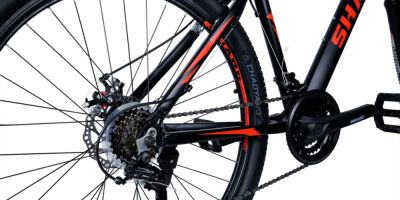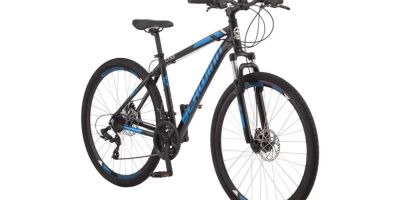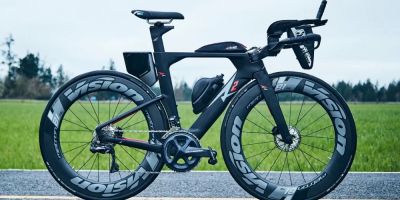Best Lights for Night Cycling: A Comprehensive Guide
As an avid cyclist, one of my biggest concerns when riding at night is visibility. Not only for my own safety but for the safety of others on the road. Over the years, I’ve learned that having the right lights is crucial. But how do you find the best lights for night cycling? In this guide, I’ll share my personal experiences with night cycling lights and break down what makes a good bike light for those late-night rides.
1. Why Are Good Lights Essential for Night Cycling?
When cycling at night, visibility is everything. I remember my first night ride without proper lighting—an experience I’ll never forget. I was riding through a dimly lit park trail, and I could barely see the path ahead. The trees, rocks, and uneven ground made it feel like an obstacle course. This was a wake-up call for me. Riding without proper lights, especially on unlit paths, can be dangerous. That's why investing in good lights is essential for your safety.
1.1 Enhancing Your Visibility to Others
It’s not just about seeing where you're going, but also about being seen. I’ve had a few close calls on the road, especially at intersections. Car drivers, pedestrians, and other cyclists might not always see you clearly unless you’re well-lit. A powerful front light, paired with a strong rear light, ensures that you're visible from all angles. I learned this the hard way during a ride where I was nearly missed by a passing car because my rear light was too dim. Now, I make sure I use high-visibility lights at all times.
2. Types of Bike Lights You Need for Night Cycling
When it comes to choosing the best bike lights for night cycling, there are two main categories you need to consider: front lights and rear lights. Both serve distinct purposes, and understanding their functions will help you make the best choice.
2.1 Front Lights: Lighting the Path Ahead
Front lights are crucial for night cycling. They illuminate the road or trail ahead, allowing you to see obstacles, curves, and other potential hazards. Over the years, I’ve tried many different front lights, but the most effective ones were always LED-based lights that provide a wide beam and ample brightness. The light should also be adjustable, so you can switch between high beams for clearer visibility and low beams to preserve battery life.
2.2 Rear Lights: Increasing Visibility for Others
While the front light is important for you to see where you're going, rear lights are essential for making sure other riders and vehicles can see you. I’ve always preferred rear lights that flash intermittently, as they seem to grab the attention of drivers from a distance. Some of the best rear lights also have a wide range of brightness settings and come with easy-to-mount clips that allow you to attach them to the bike frame or seat post.
3. What to Look for in a Quality Night Cycling Light
Not all bike lights are created equal, so knowing what to look for is essential. From battery life to durability, here are the key features I look for in a great cycling light:
3.1 Brightness and Lumens
One of the most important factors to consider is brightness, measured in lumens. I’ve found that lights with at least 500 lumens provide a good balance between brightness and battery life. Anything below that can make it difficult to see clearly, especially on darker trails. Some of my favorite lights go up to 1000 lumens or more, providing powerful beams that allow me to confidently ride on any path, even in complete darkness.
3.2 Battery Life
Battery life is another critical aspect when choosing a bike light. I’ve been caught on long rides when my light suddenly ran out of power, which is not only inconvenient but dangerous. Ideally, you want a bike light that can last at least 3-5 hours on a single charge. Many modern lights now feature USB rechargeability, so you can easily charge them before every ride. I also prefer lights with a battery indicator so I can track the remaining power during my ride.
3.3 Durability and Weather Resistance
Since I often ride in varying weather conditions, durability is essential. The best bike lights for night cycling are built to withstand the elements. I make sure that my lights are water-resistant, preferably with an IPX6 or higher rating. This ensures that the lights can handle rain or even occasional splashes without malfunctioning. Durability is equally important—after all, I need something that will last through rough handling, bumps, and the occasional drop.
4. Top Lights for Night Cycling: My Personal Recommendations
After testing a variety of night cycling lights, there are a few that I highly recommend based on performance, value for money, and reliability:
4.1 NiteRider Lumina 950
The NiteRider Lumina 950 has been one of my top choices for front lights. With its 950-lumen output, it’s bright enough to light up the darkest of trails. It also offers a USB rechargeable battery, which lasts for up to 20 hours on low mode. I’ve used this light on a variety of rides, from city streets to forest trails, and it never disappoints.
4.2 Bontrager Flare RT
For rear lights, the Bontrager Flare RT is a standout. It offers a powerful 90-lumen output with a variety of flashing modes to ensure visibility from miles away. What I love most about this light is its compact size and how easily it attaches to my bike. It’s also equipped with a tail light that syncs with other Bontrager lights, which makes it a great option for group rides.
4.3 Cygolite Hotshot Pro 150
If you’re looking for a rear light that provides excellent visibility, the Cygolite Hotshot Pro 150 is a great pick. It’s super bright, with 150 lumens of light, and offers multiple modes, including a pulsing flash that grabs attention. I’ve used this light on both daytime and night rides, and it’s always been a reliable companion for ensuring I’m visible.
5. Tips for Using Your Bike Lights Effectively
To maximize the effectiveness of your lights, here are a few tips I’ve learned along the way:
5.1 Proper Positioning
Positioning your lights correctly is essential for maximum visibility. The front light should be mounted as low as possible without blocking the beam, and the rear light should be high enough to avoid being obscured by the seat or luggage.
5.2 Regular Maintenance
Just like any piece of equipment, bike lights require regular maintenance. I make sure to clean the lenses after every ride to prevent dirt buildup, which can reduce brightness. I also check the battery regularly and ensure that everything is securely mounted before heading out.










